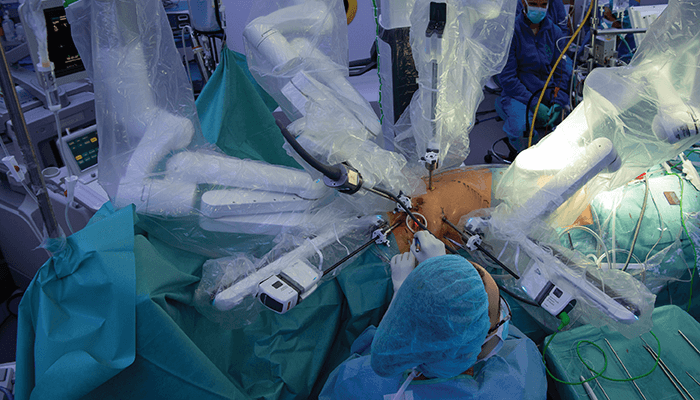
Ophthalmology is increasingly reliant on technology; telemedicine is revolutionizing patient consultations, blockchain is securing patient administration, artificial intelligence is making waves in imaging and diagnostics.
But what about robotics-assisted surgery? Where is it working – and where is it not?
Well, ophthalmologists in China have performed robotics-assisted orbital fat decompression surgery on 18 eyes of Graves’ disease patients, with the explicit aim of reducing tissue damage and increasing precision (1). The group found the da Vinci Xi surgical system was safe – with no intraoperative or severe postoperative complications – but, perhaps more impressively, use of the system reduced human involvement to simply exposing the surgical field and cleaning up blood.
Although the duration of the operation wasn’t significantly reduced compared with manual surgery, the robotic assistance did provide the surgeon with a more comfortable operating position. The study shows that, given the complex and delicate nature of eye surgery, the use of optimized robotic assistance has the potential to reduce not only risk and tissue damage – but also surgeon pressure and fatigue. However, the group highlighted that the robotics-assisted approach hindered manipulation accuracy – mainly due to a lack of applied force control and haptic feedback. They also acknowledged that future studies – with more participants and a control group – will be needed to provide conclusive evidence of success.
And yet, the positive results do point to an interesting future where the ophthalmic surgeon’s skill and the robot’s precision will be combined to improve outcomes and make life easier for ophthalmologists.
Where do you think robot-assisted technology would be most valuable? Let us know by commenting below or emailing edit@theophthalmologist.com.
References
- Y Wang et al., Transl Vis Sci Technol, 11, 8 (2022). PMID: 35536720.
